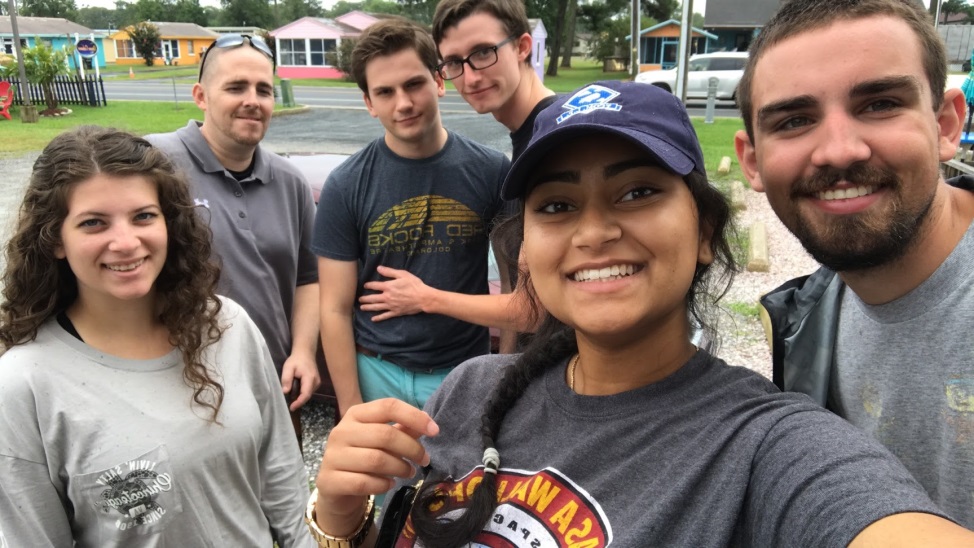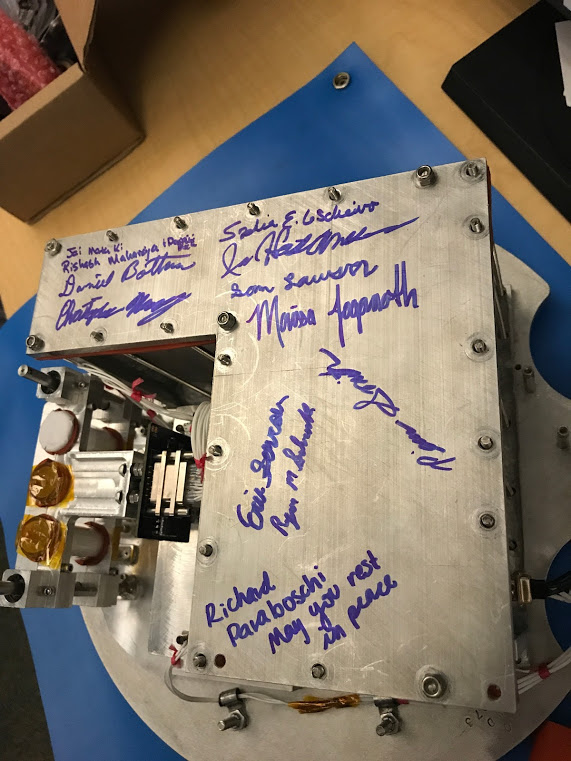Capitol Students Savor NASA Launch, Project Success
December 31, 1969Not many college graduates can say they have had the experience of building a payload and seeing NASA launch it into space.
For the Capitol Technology University students who attended RockSat-X this summer, it was an experience they won’t forget.
 “The launch was at 5:30 am,” recalls Christopher Murray, the team’s flight software specialist. “We had a smooth recovery, with our payload still intact – although a little seawater got in. Our antenna was preserved. Most of our stuff was retrievable; we just had to wipe off the water.”
“The launch was at 5:30 am,” recalls Christopher Murray, the team’s flight software specialist. “We had a smooth recovery, with our payload still intact – although a little seawater got in. Our antenna was preserved. Most of our stuff was retrievable; we just had to wipe off the water.”
Murray and his fellow team members were there to test Project Hermes, an ongoing, student-led effort to investigate new approaches to satellite control and telemetry. Initiated by Capitol professor Rishabh Maharaja in 2014, the project has experimented with methods of linking up with a satellite payload using a mobile phone.
Attending RockSat-X in August along with Murray were fellow team members Marissa Jagarnath, Sam Lawson, Sophia LoSchiavo, Erik Schroen, Pierce Smith, and Dean Zanetti, together with mentor Ryan Schrenk.
 At RockSat-X, the team’s goal was to communicate with its payload via the Iridium constellation, a globe-spanning network of 66 satellites in polar orbit.
At RockSat-X, the team’s goal was to communicate with its payload via the Iridium constellation, a globe-spanning network of 66 satellites in polar orbit.
“We were able to achieve instantaneous communication between the rocket and our smartphones, allowing us to track it at apogee and plot its path,” Murray explains. “We’re the first to do that using Iridium. It’s quite groundbreaking.”
Sophia LoSchiavo, Hermes project manager, said the team is pleased with the results, despite some anomalies.
“We received messages to our cell phones containing GPS data as well as maintenance data,” she said. “We received latitude and longitude – the longitude was accurate, though the latitude data was iffy. Even though we didn’t receive as much data as we would have liked, there was definitely enough to call it successful.”
Team member Sam Lawson played a key role in designing and building the payload structure. He says he values the practical experience gained through RockSat-X – and through Project Hermes and similar endeavors at Capitol.
“You get to design a payload from the ground up while working within NASA guidelines,” he said. “Working as part of a team to co-ordinate and build your own thing and at the end of the process see it get sent into space – it’s really exciting.”
Students also see gaining hands-on experience as essential to forging a successful career, Murray said.
“Everything that we’re doing here benefits the students and is helping us look better when we go out into the job market. Not many people in a job interview can honestly say that they have participated in designing a payload that went up into space,” he said.
“It’s a great thing to have on your resume,” LoSchiavo agreed.
Photos: a) From left: Sophia LoSchiavo, Ryan Schrenk, Pierce Smith, Christopher Murray, Marissa Jagarnath, Sam Lawson; b) the Hermes payload. Photos by Marissa Jagarnath


